Consider the sounds of high summer: the chattering of rooftop starlings, the hum of your neighbour’s lawnmower. Listen more closely and you might be able to hear the delicate scratching of a wasp on the wood of your garden shed.
Wasps are sociable insects, living in vast colonies of up to 10,000 workers that build nests in trees, buildings and old animal burrows.
Love them or loathe them, wasps are a fascinating and hardworking species to watch. Queen wasps hibernate in the winter before emerging in spring to build nests and lay eggs. The workers in the colony will later take over the nest building duties and collect food for the growing larvae in the spring and summer months.
Our guide to wasps looks at common wasp species found in the UK, their lifecycle and why wasps tend to sting in autumn.
Find out what the difference is between a wasp and a bee
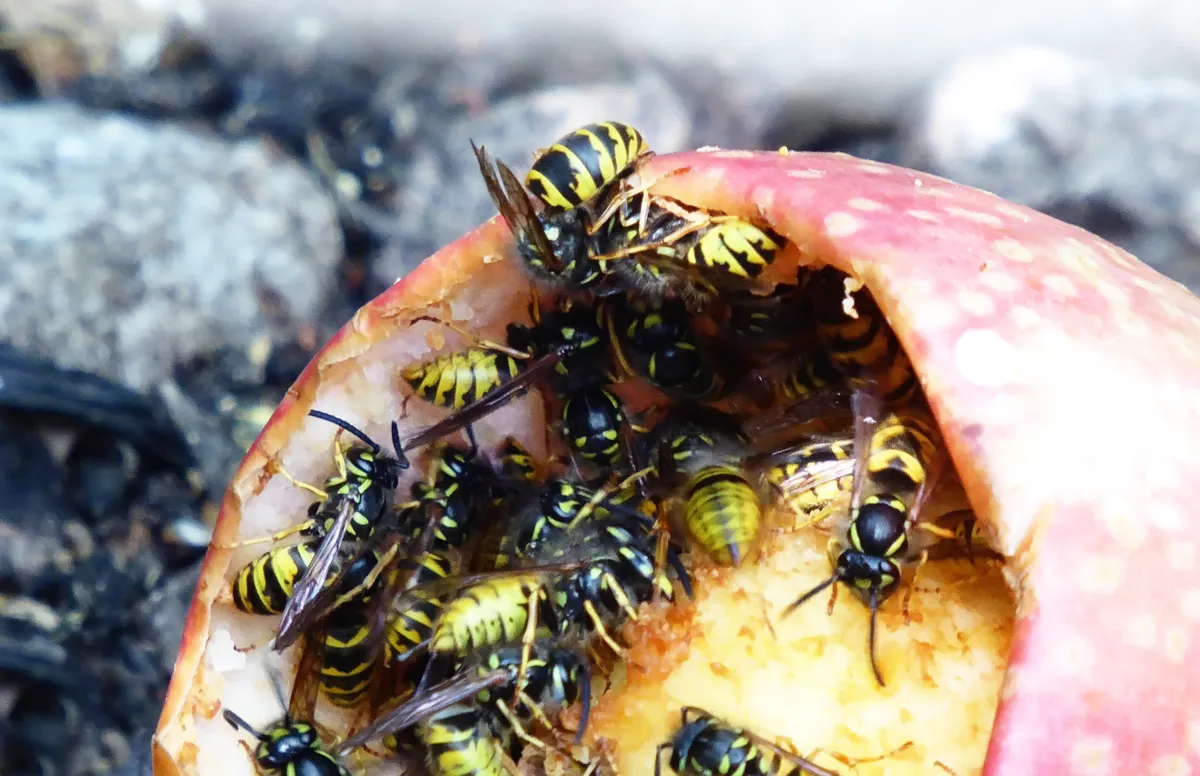
What do wasps do?
Like a number of other insects such as butterflies, moths and flies, wasps are also pollinators of flowers and crops.
What do wasps eat?
Wasps love anything sugary so beware the next time you're enjoying a cream tea, ice cream or cold cider! Adult wasps don’t need much protein (the bugs they prey on are for the developing brood in the nest) but they do need sugar, which they get in the form of nectar from flowers.
In the process of finding it, the wasps pick up and transfer pollen from flower to flower. Unlike many bees, wasps don’t mind what flowers they visit – as generalist pollinators they’re more abundant than bees in degraded or fragmented habitats and so are important ‘back-up’ pollinators in these areas.
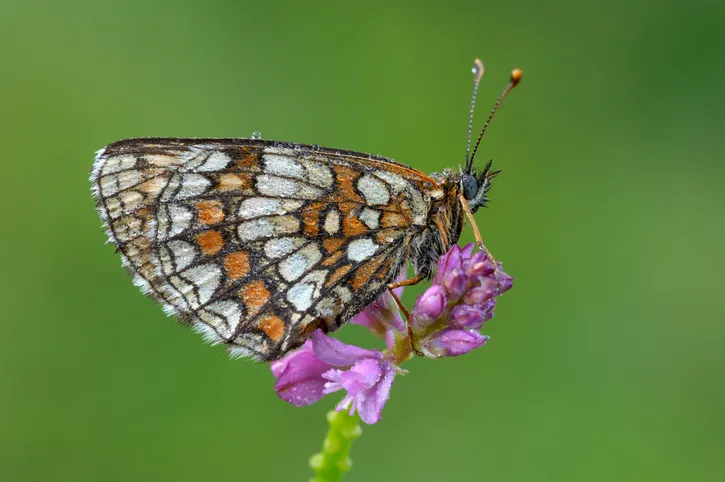
What is the most common wasp species found in the UK?
The most commonly found wasp in the UK is the yellowjacket (Vespula vulgaris), the black and stripy species you often find yourself swatting away. The reputation of this and a few other species has tarred that of another 200,000. Indeed, wasps are second only to beetles in terms of species numbers and there are thought to be at least 100,000 more waiting to be discovered.
Social wasps (that includes our stripy friend) represent less than 1% of the total wasp species in the world. And most aren’t yellow and stripy or fond of picnics.
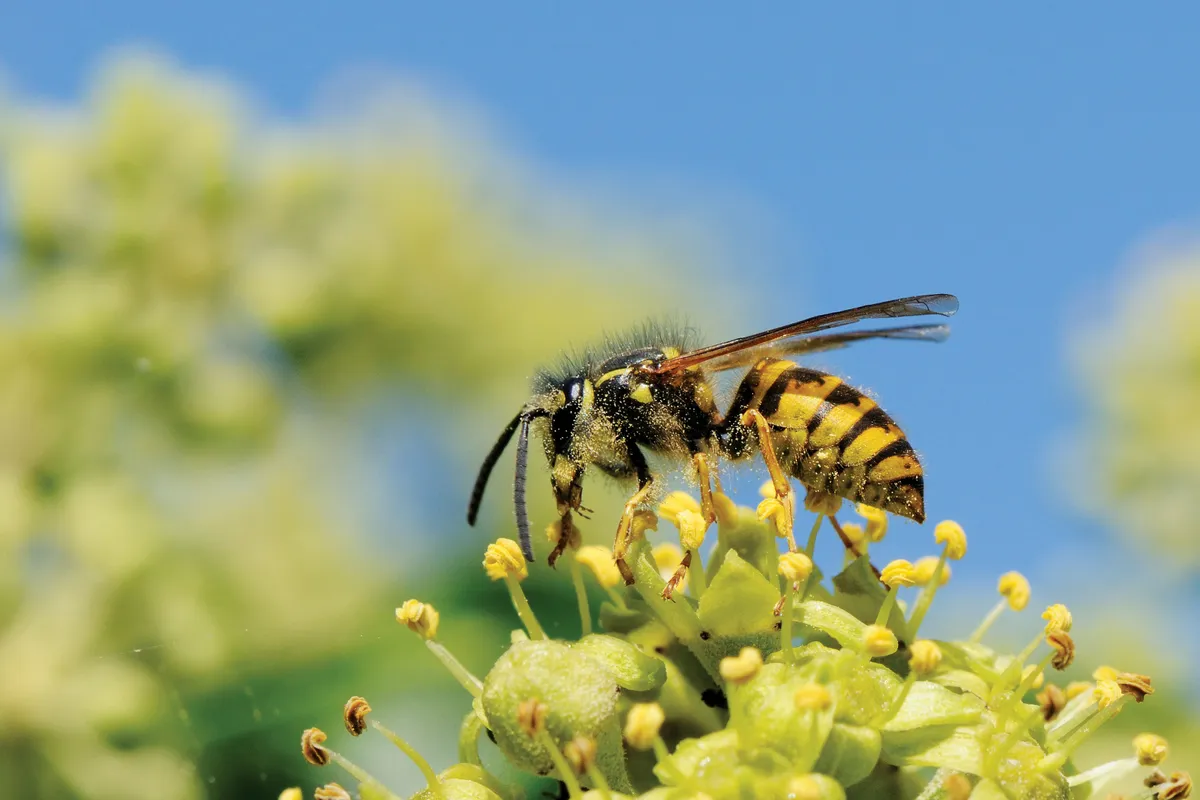
The vast majority of described wasps are tiny black insects that you’d probably mistake for flies. In fact, the smallest insect in the world is a wasp: the ‘fairyfly’ is a mere 0.14mm long and only lives for a few days. Despite its size, it plays a vital role in agriculture, as it lays its eggs in the bodies of crop pests, essentially working as an alternative to chemical pesticides.
How many wasp species are there in the UK?
In the UK there are approximately 9,000 species of wasp. This includes larger wasps species that sting and microscopic parasitic wasps that can't be seen with the naked eye.
Common wasp species found in Britain
Common/German wasp (Vespula vulgaris/germanica)
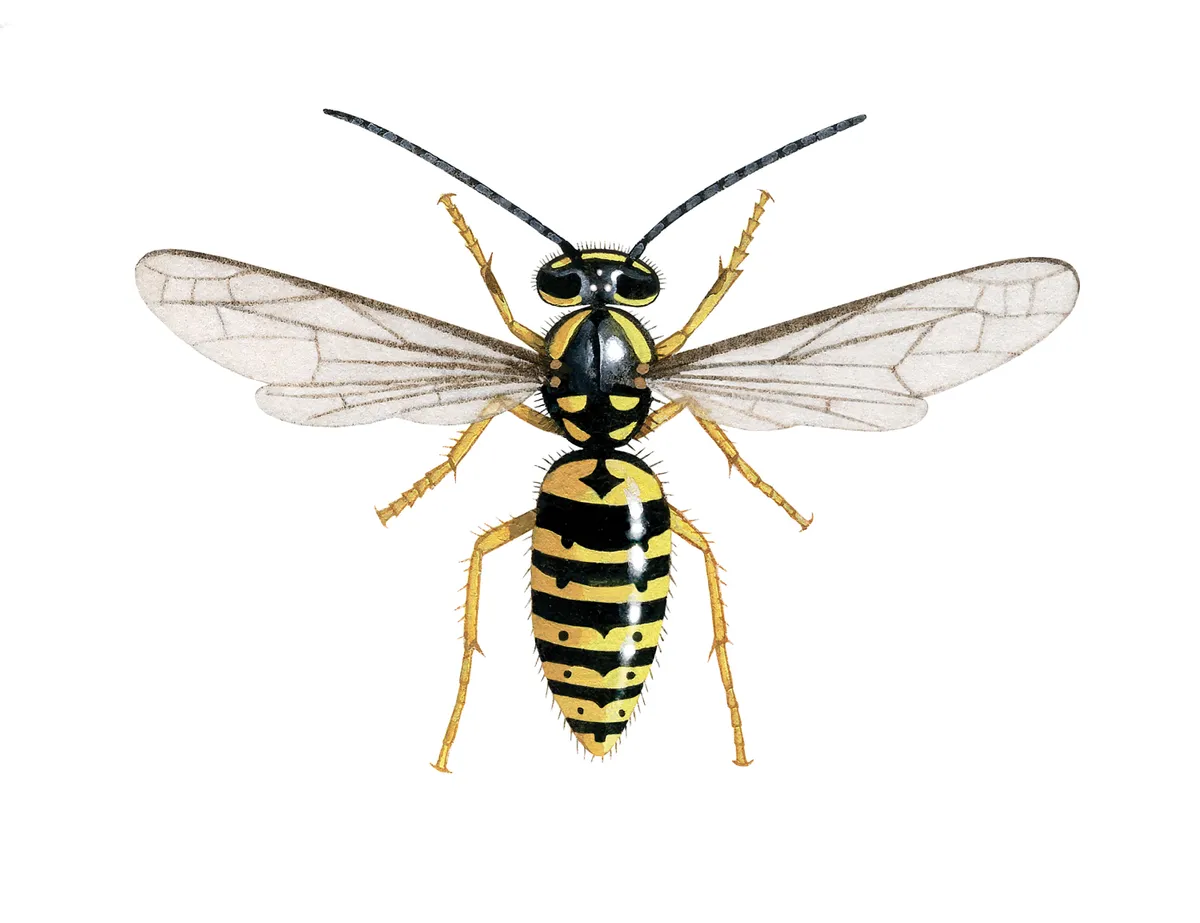
These are the wasps most likely to upset your picnic. V. germanica tends to be more bad tempered than V. vulgaris. These two species of common wasp are practically identical but you can tell them apart by their facial and thorax markings. Both species have a single queen who produces 6,000 to 10,000 workers. They make football-sized nests in the ground or in roofs and trees.
European hornet (Vespa crabro)
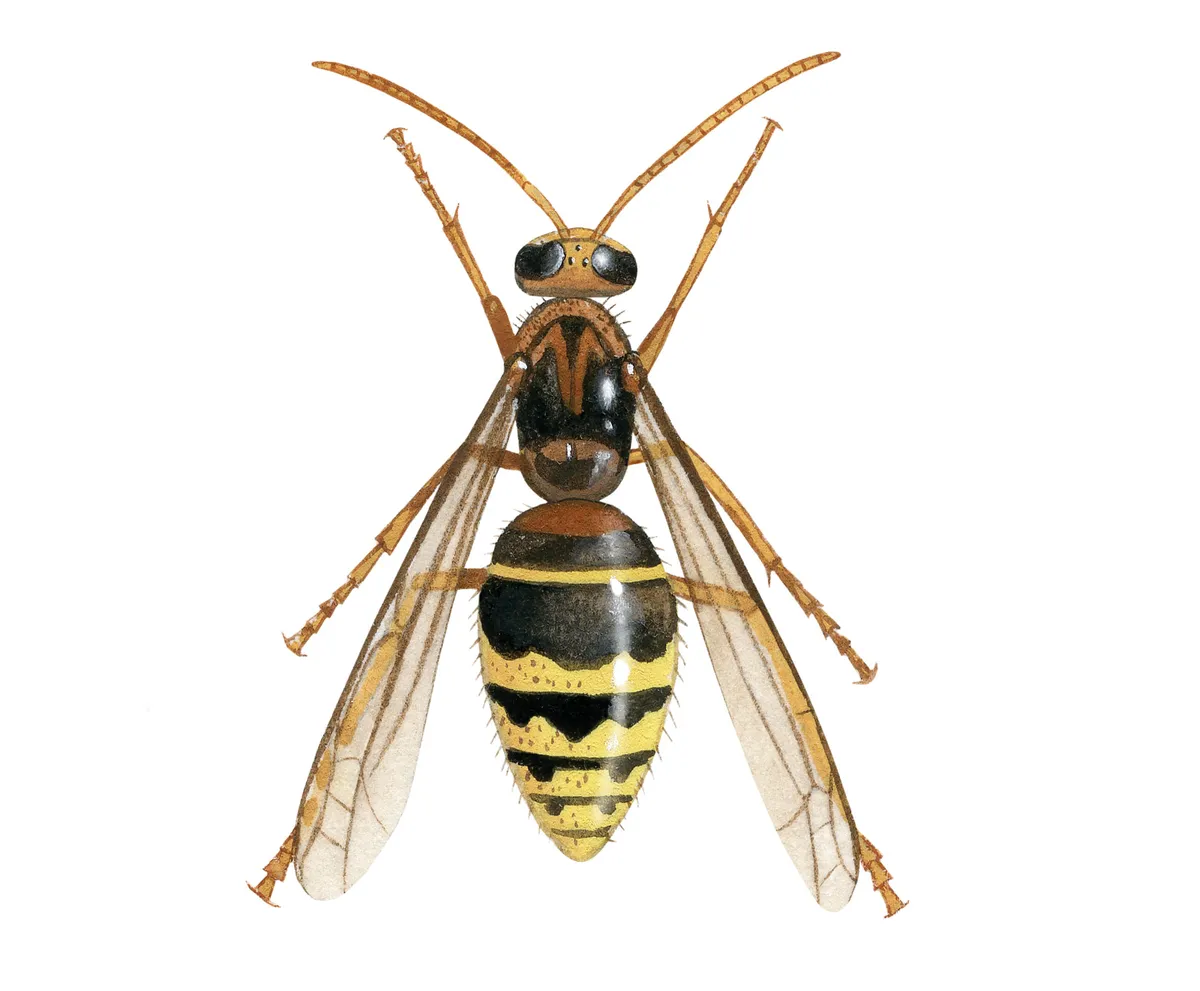
The European hornet is about twice the size of the other social wasps but despite its looks is unlikely to bother you at picnics. Hornet colonies have a single queen and around 100 workers. They like to nest in tree cavities or bird boxes.
Yellow-legged Asian hornet (Vespa velutina)
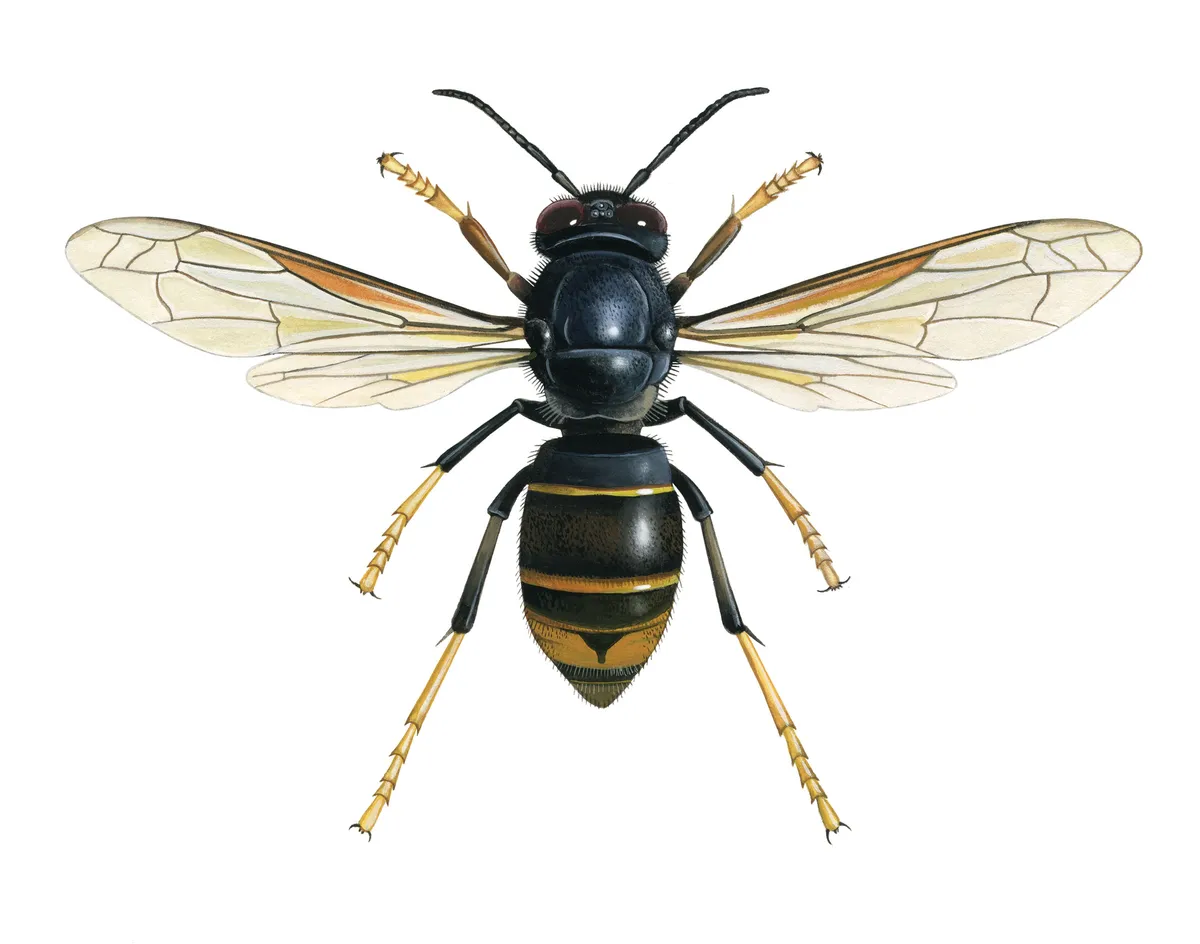
This Asian hornet species is a voracious predator of honeybees that was inadvertently introduced to southern Europe in 2004. It’s now widespread in France, Spain, Italy and Belgium, but not the UK, which has an effective extermination protocol for dealing with these invaders. Suspected sightings can be reported using the Asian Hornet Watch app (available for Apple and Android devices) or by emailing details and photos to the Centre for Ecology & Hydrology alertnonnative@ceh.ac.uk.
It's not to be mistaken for the world's biggest wasp, the Asian giant hornet
Red wasp (Vespula rufa)
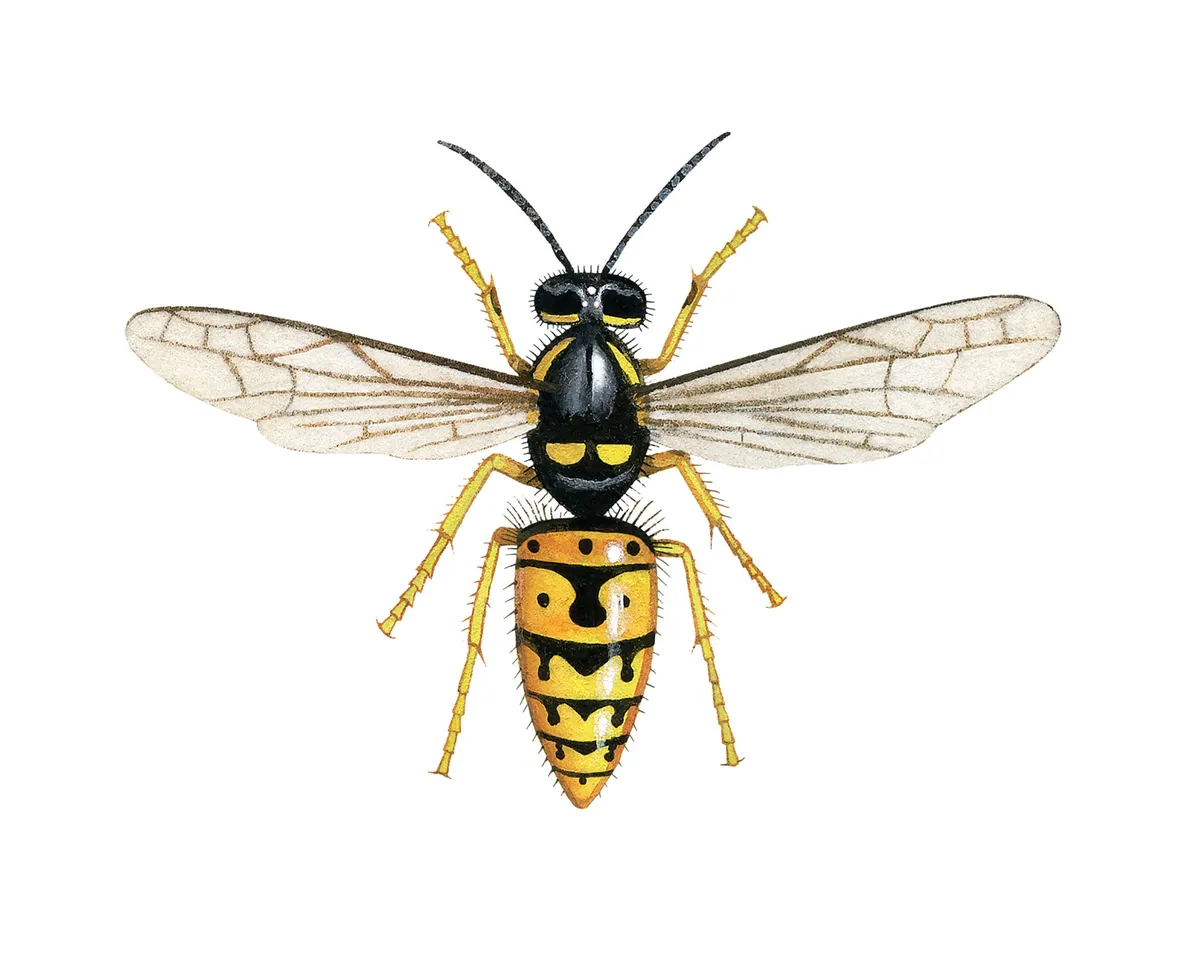
Red wasps have a distinguishing red tinge on their abdomens. Their nests are smaller and always underground. A single queen will produce around 300 workers. The colony cycle of V. rufa is shorter than V. vulgaris/germanica, ending in late August.
Dolichovespula species
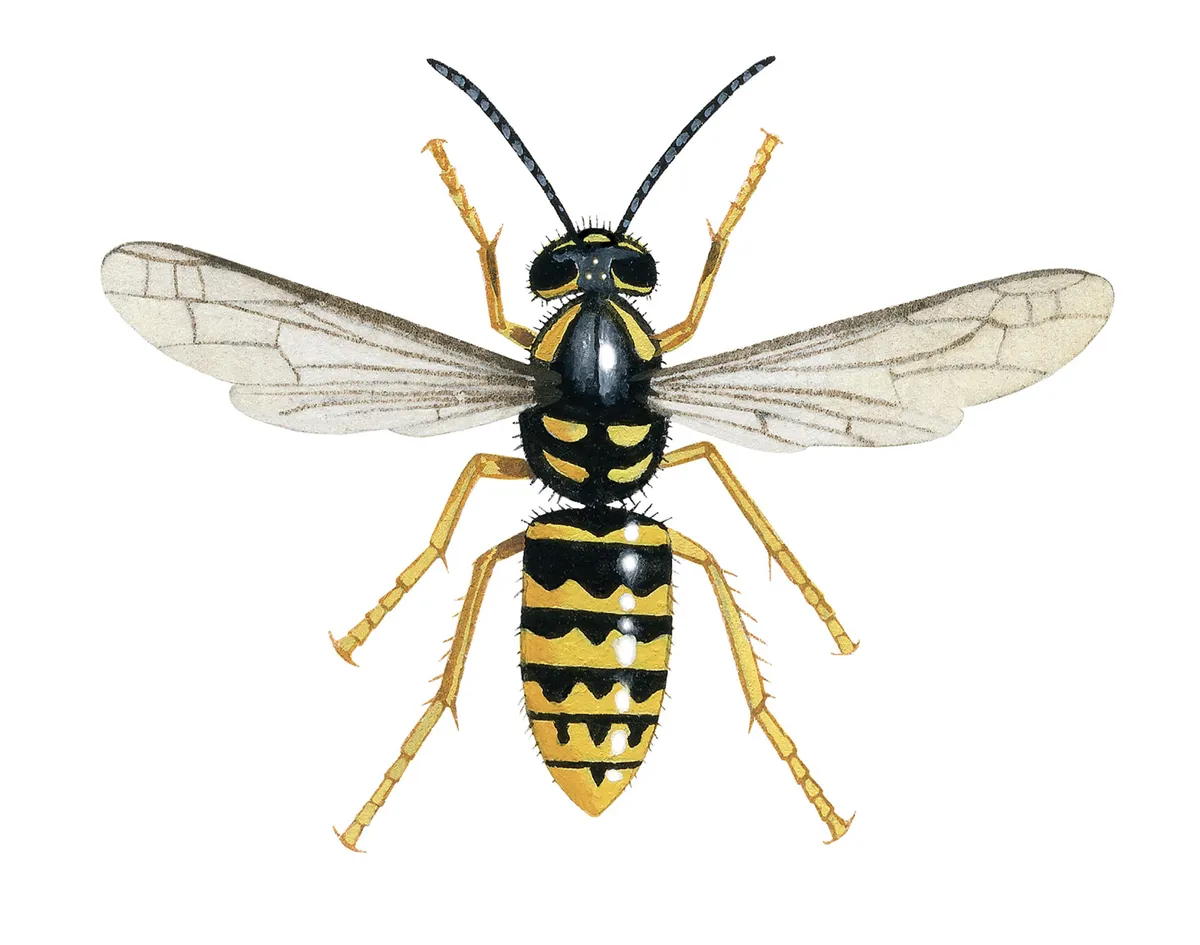
There are three species of Dolichovespula in the UK. The most common is Dolichovespula media. You can tell them from Vespula as they’re bigger and have blacker abdomens and are only seen in early-mid summer. Their new queens leave the nest in early August and thereafter the colony soon winds down.
How do wasps help wildlife?
As predators, they’re at the top of the food chain and without them food webs would break down. They help to keep other invertebrate populations, such as spiders, woodlice, and insects, in check.
They’re also generalists: wasps will feed on whatever’s around. They eat the most abundant pests that we try to control with toxic chemicals – there’d be many more aphids in my garden without wasps. We don’t have good data on how much wasps eat, but a single colony is thought to remove somewhere between 0.16-23kg of prey per season. Using a modest estimate, that amounts to about 250,000 aphids from each colony.
How do you know if a wasp is male or female?
Far from being a malicious pest looking to ruin your picnic, the female wasp is completely focused on collecting wood pulp to expand her mother’s nest. It’s a labour of genetic love – the harder she works, the more wasps her mother’s nest will produce, and the more of her genes will be passed on to the next generation. Female wasps tend to be larger than male as they carry the eggs.
How do wasps reproduce?
Wasps have a fascinating social life. A yellowjacket colony is much like that of a honeybee, with a queen supported by a community of workers. It sounds harmonious but look closer and you’ll see a veritable Game of Thrones in full swing. The parallels with human societies are uncanny: there are specialist work forces, rebellions, policing, leadership contests, undertakers, police, even free-loaders and anti-social thugs. You name it, social wasps have it.
The lives of social wasps revolve around gene-sharing (or relatedness). Worker wasps are ‘self-sacrificers’, they have evolved to work rather than reproduce because their genes are passed on through the brood they help rear (their siblings).
But this social contract is only a good deal if their mother is singly mated. Queen wasps only have one mating flight in their lives, but during that time some species mate with several males: they store the sperm in their abdomen and control its release to fertilise the eggs they lay throughout their lives.
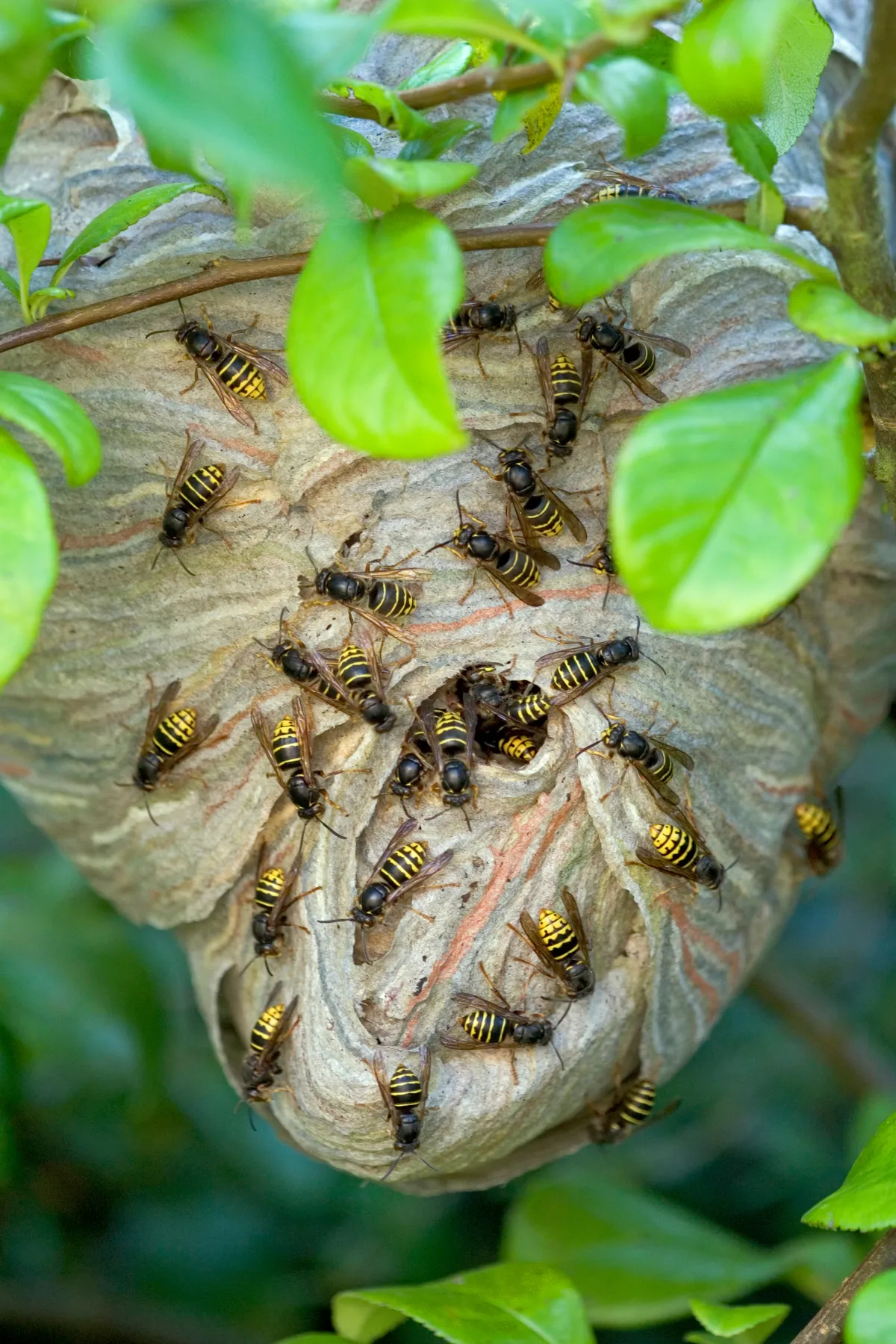
Multiple mating means the queen dilutes the relatedness of the workers in her brood and workers end up rearing a mix of half- and full-siblings, which can break the social contract of the colony. In these cases, workers can do better, individually, if they lay their own eggs. And this is when things get messy: sneaky egg laying by workers can cause a colony’s cohesion to break down, creating internal battles among the workers. They may be bloodless battles, as no insect blood (haemolymph) is shed, but they’re fought by ruthless means: workers that detect another worker’s eggs will eat them before they hatch.
But aren’t we taught in schools that only queens lay eggs? In fact, workers in almost all Hymenoptera (bee, wasp and ant) colonies can lay eggs. Because of a genetic quirk of the Hymenoptera, females hatch from fertilised eggs and males from unfertilised eggs. Worker wasps have lost the ability to mate, but can still lay male (unfertilised) eggs.
How can wasps help humans?
There are other reasons to admire wasps. For one thing, they may be indirectly responsible for the invention of paper. Around 2,000 years ago a Chinese eunuch called Cai Lun noticed a wasp building a paper nest in his garden. Inspired by what he saw, he started to mulch wood and with it made the first paper. If the story is true, then perhaps we have wasps to thank for much of our rich cultural history and development.
Fast forward to today where exciting research is looking into the potential use of wasp venom as a cancer therapy. An active peptide found in the venom of tropical social wasps selectively destroys cancerous cells by causing their membranes to leak. Wasps may have the potential to save human lives.
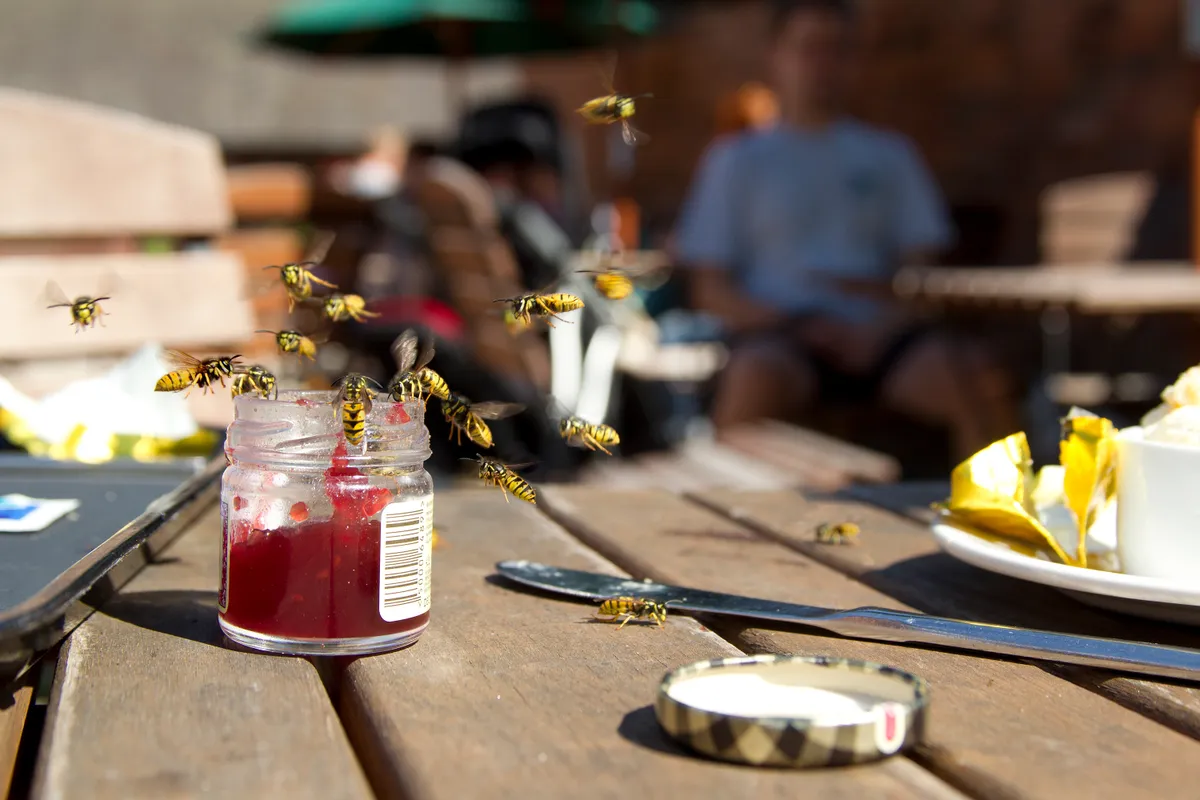
A better appreciation of the ecological, economic, medical and cultural services that our stripy friends provide might help us see them in a different light. So next time your picnic is disturbed by black and yellow insects, take a moment to think about their extraordinary world and the contributions they make to our lives before you reach for the swatter.
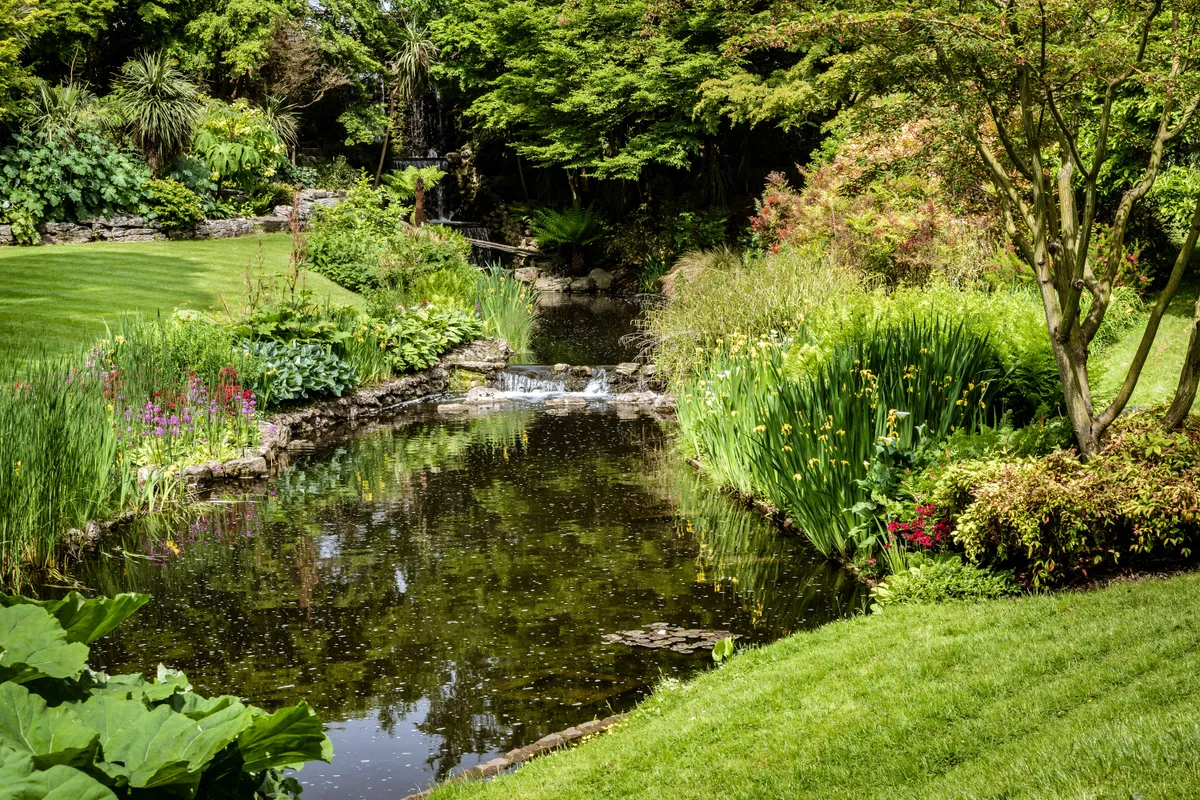
How long do wasps live?
Discover the lifecycle of social wasps
The queen wasp emerges from hibernation
A single-mated queen emerges from winter hibernation in the early spring. Her workers build a nest in a cavity in the ground or a tree, and only after the nest is fully established will she build each cell and lay an egg in it.
Her offspring emerge
After about 30 days, her first offspring – the workers – emerge as adults. They’re all female at this point. The workers takeover the foraging, brood care and nest building and maintenance duties; the queen becomes a stay-at-home egg-laying machine.
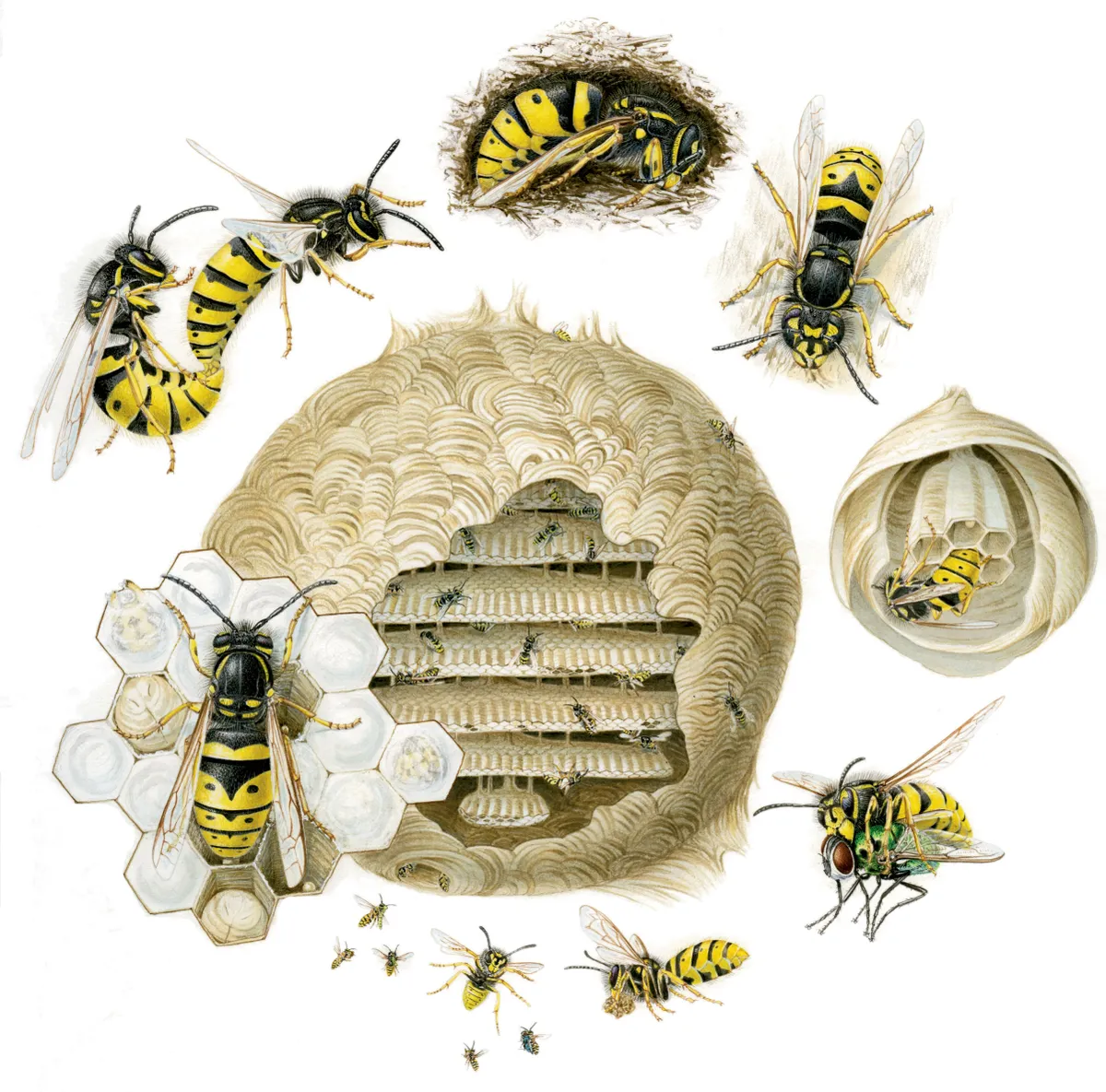
Larvae hatch
After a few days carnivorous larvae will hatch from the newest eggs. The adult workers bring insects back to the nest to feed to the hungry larvae, which offer a sugary reward to the workers, via a process called trophallaxis. The larvae grow over a couple of weeks before they spin their pupal cap and pupate.
The colony grows
Over the next couple of months, the colony will grow, possibly to include thousands of wasps, depending on the species. Once the colony is big enough, the queen will switch to laying a sexual brood: these are males and the sexual females capable of becoming next year’s queens.
Wasps mature and leave the nest
When the sexual brood emerges, they leave the nest to mate and then find somewhere to hibernate over the winter (lofts are a popular choice). After this point, the nest has served its purpose but the workers are still alive with no brood to feed – this is when they start to bother you.
Why do wasps sting in autumn?
Wasps tend to be at their most irritating in October – but why? The answer actually lies in the unusual ecology and bizarre anatomy of social wasps. In the spring, queen wasps wake from hibernation and start to build their nest, laying eggs and raising their first brood of daughters. These worker wasps cannot produce fertilised eggs so spend their time helping their mother expand the nest and raise more young.
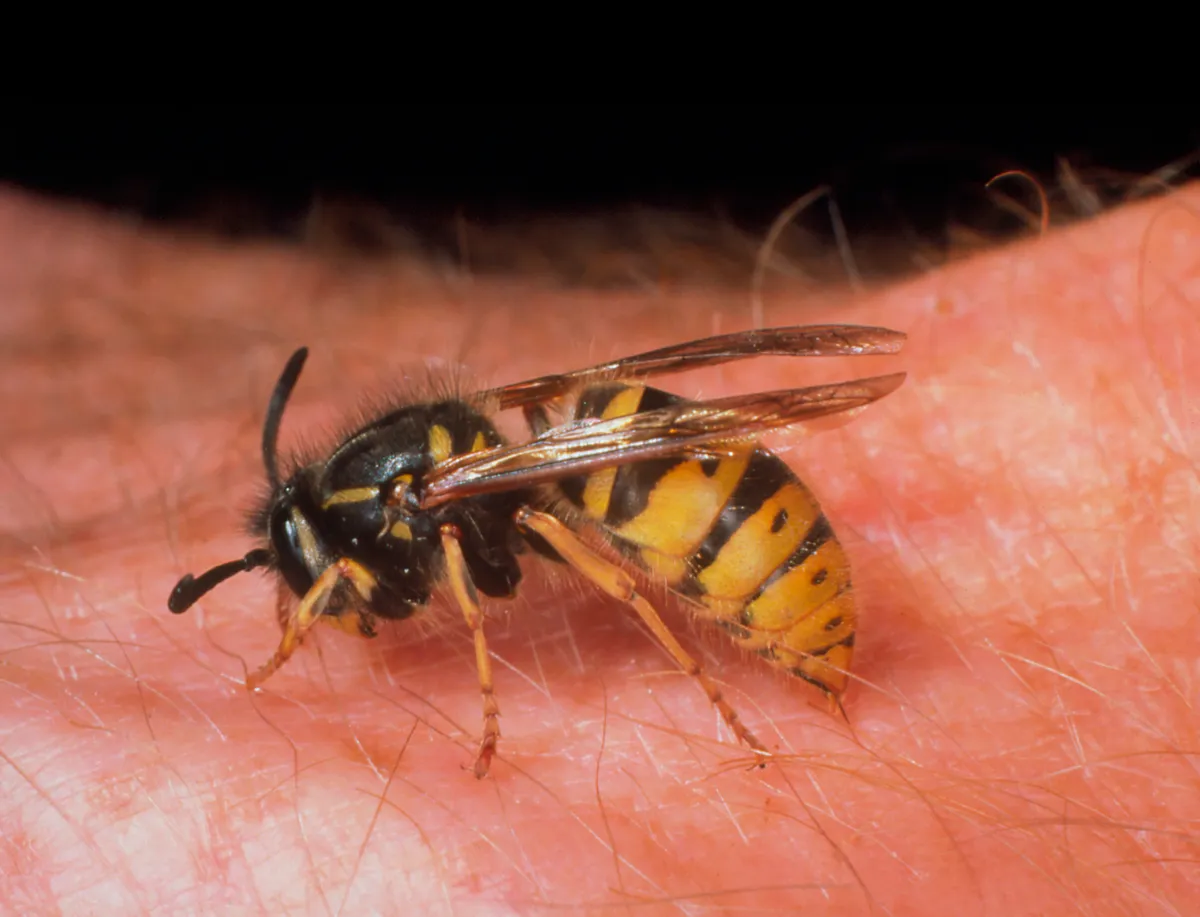
One of their main jobs is searching for soft bodied invertebrates to feed the developing larvae. Bizarrely, adult wasps cannot digest the food they catch because their gut is so constricted by their thin “wasp waists”. Instead the workers chew up the prey and feed it to the larvae. In return the larvae produce a sugar rich spit that the workers can drink.
Social wasps only really become a nuisance in late summer. At this time there are no larvae left to feed so instead of hunting for prey the workers turn their attention to sugar (nectar and your picnic). Wasps sting to defend themselves – this is an evolved strategy to combat vertebrate predators at the nest: swatting at them may elicit the same innate collective behaviour. Some wasps’ stings trigger the release of an alarm pheromone that attracts more wasps. To minimise the nuisance, try to isolate the first wasp to appear under a glass but don’t forget to release her at the end of your picnic.
What does a wasp sting look like?
A wasp sting is painful and will generally leave a red mark which can look inflamed and leave a welt. You might be able to see a small puncture mark at the sting site. To treat the sting, gently wash the wound with clean water and then apply a small amount of antiseptic or bite cream. Try to avoid scratching the bite and it should heal quickly. Some people can develop a skin reaction to a sting which can cause skin redness and swelling but should ease in a couple of days. A minority of people can experience anaphylactic shock which is serious and will require medical treatment.
The best advice is to try to avoid wasp stings by covering up and keeping enticing food and drink covered.
Learn more about insects that bite or sting
Could wasps provide an alternative to meat?
Wasp larvae are a sustainable alternative to meat. Over 2 billion people in 80% of the world’s countries feast on insect protein every day. Wasps represent about 4% of the insect species consumed and are the most common edible insects on sale in rural China. In fact, a new cottage industry of wasp harvesting in ‘Vesparies’ is springing up in Japan.
The author
Dr Seirian Sumner is a behavioural ecologist at University College London. Her research focuses on understanding how and why animals and insects such as wasps live in societies.


